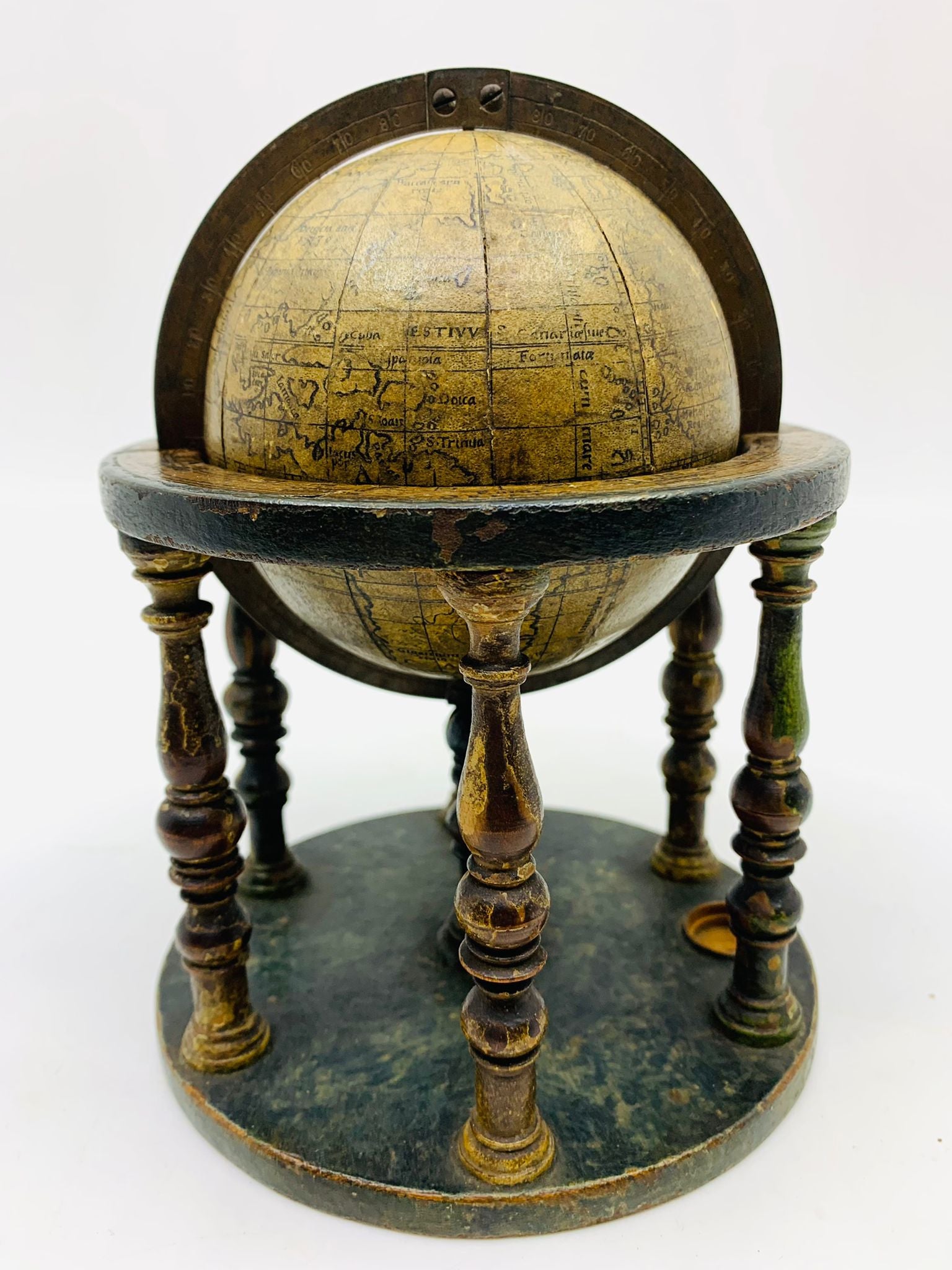16th century globe bought for £150 at antiques fair sells for £116,000
The artefact’s upper estimate was £30,000.

Your support helps us to tell the story
From reproductive rights to climate change to Big Tech, The Independent is on the ground when the story is developing. Whether it's investigating the financials of Elon Musk's pro-Trump PAC or producing our latest documentary, 'The A Word', which shines a light on the American women fighting for reproductive rights, we know how important it is to parse out the facts from the messaging.
At such a critical moment in US history, we need reporters on the ground. Your donation allows us to keep sending journalists to speak to both sides of the story.
The Independent is trusted by Americans across the entire political spectrum. And unlike many other quality news outlets, we choose not to lock Americans out of our reporting and analysis with paywalls. We believe quality journalism should be available to everyone, paid for by those who can afford it.
Your support makes all the difference.A 16th century globe bought at an antiques fair for £150 during the pandemic has sold for £116,000 after sparking a worldwide bidding war.
The carved wood and paper sphere, which dates to either the 1550s or the 1560s, was found after being brought by its owner to a free valuation event, Hansons Auctioneers said.
At the time it was made, no European had set foot on or even sighted Australia and the landmass is missing from the artefact.
Its mapped sides, made from carefully engraved paper panels known as gores, also include sea monsters while North America is described in Latin as “Devicta ann 1530” or “conquered in 1530”.
And it was from the continent that the winning online bid came, as a purchaser in New York topped offers from four other would-be buyers.
The globe smashed its upper estimate of £30,000, although experts had said its age and rarity effectively made it “priceless”.
The female seller, who watched the sale live from her home in Wales, said she was left in “shock” after it fetched six figures.
I thought I was pushing the boat out at £150 when I bought it during the pandemic
She said: “I thought I was pushing the boat out at £150 when I bought it during the pandemic.
“I had no idea it was so important and valuable.
“I watched the auction with my friend, my husband and a glass of wine.
“My friend was crying,
“I was in shock and my husband was totally and utterly dumbstruck.
“It goes without saying that I’m delighted.”
Charles Hanson, Hansons Auctioneers’ owner, said: “The bidding battle for this globe was out of this world and deservedly so.
“It’s one of the most important historical finds Hansons has ever made.”
The final price reached was a 77,000% return on the £150 outlay, before fees and commission.
The globe is thought to be either the work of Francois Demongenet, a French physicist and geographer, or derived from one of his designs, said Jim Spencer of Derbyshire-based Hansons.
He said: “One specialist I spoke to said 16th-century globes are nigh on impossible to come across.
“Our globe looks like it could be the earliest ever offered at auction.”
The oldest terrestrial globe in the world is the Erdapfel from 1492, with Mr Spencer adding “the age of our globe firmly places it among the rarest in existence”.
Valuers were left stunned when the globe was first brought by its owner, who is from North Wales, to the auctioneers’ Staffordshire saleroom at Bishton Hall, Wolseley Bridge.
Around the time it was being crafted, England was going through a period of political upheaval, with the premature death of Edward VI followed by the ill-fated nine-day reign of Lady Jane Grey, then the tumult of Mary I, and finally her sister Elizabeth I taking the throne.
The era was one of exploration as navigation improved, with Sir Francis Drake the first Englishman to circumnavigate the world.
Mr Spencer said: “People would’ve been wearing ruffs and codpieces when they first handled this globe in Elizabethan England.
“It’s amazing to think of all the historical events this delicate little globe has survived.
“As well as coming through two world wars, it was made a century before the Great Fire of London in 1666.
“To me, it feels like a museum piece.”
The globe was originally in the collection of Major Edward Croft-Murray, former keeper of prints and drawings at the British Museum, before being bought by its current owner.
Mr Spencer said: “I guess we’ll never know how Major Croft-Murray acquired the globe, but we do know he was one of the Monuments Men who rescued all manner of treasures during the war.”